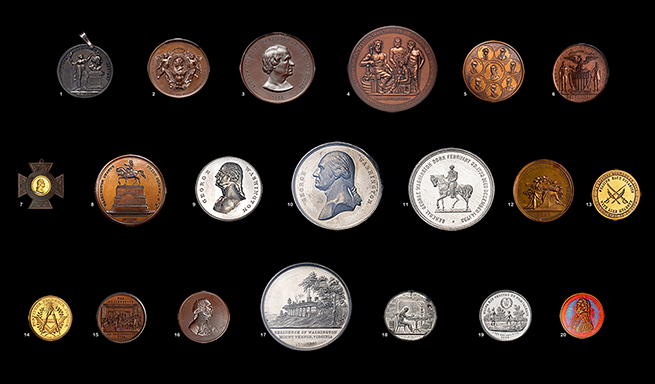
INTRODUCTION
George Washington’s heroism and humility are immortalized in countless medals bearing his name and image. Reflective of profound national admiration and international celebrity, these medals play a crucial role in fostering the deep and widespread love of America’s Founding Father. As William Spohn Baker explained, “Washington is associated in the minds of a people with all their diversified interests, pursuits and enterprises. If benevolence is to be awakened, patriotism aroused, emulation excited… the designer…turn[s] at once to the Pater Patriae.”
Washington’s symbolic profile summons various aspects of his character. Whether dressed in full military regalia, contemporary fashion or even a toga, his prominent Roman nose and familiar wig are universally identifiable. However, there are interesting outliers in style, age, and facial features such as the Manly Medal. The first medallic commemoration of Washington issued in America, it presents an unflattering likeness, based on a previous portrait, that accentuates his sagging jaw and gaunt cheeks. Though unbecoming, it was one of the few medallic portraits Washington himself would have seen.
Medallic representations of Washington reflect the diversity of America. Predominately produced after his death, memorial medals invoke his legacy through imagery of his tomb and monument. Presenting him on horseback with sword drawn, military medals display the Revolutionary General, as Masonic symbols and personal associations reveal the civilian farmer within. His influential name and image have also been appropriated in support of seemingly unrelated purposes, as in the 1887 International Medical Congress bronze that presents Washington as Zeus holding a caduceus. America’s first celebrity, Washington’s likeness endorsed countless causes and events, representing both the talents of a warrior and the virtues of the sage.
